Ninety years ago construction began on a monumental project that never came to fruition–the Eileen Dam. A rock failure caused the entire project to be left standing as a monument to the area’s early mining days.
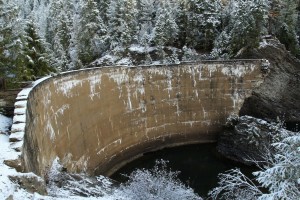
The Eileen Dam was an early attempt to harness the Moyie River for energy but it never had the chance to generate power
The Eileen Dam was constructed to provide electricity to mines in the Deer Creek area owned by Cynide Gold Mining Company. Mining activity started in the Deer Creek area around 1896 and included mines such as Hoosier Boy, Buckhorn, Boston, Keystone, Lucky Three, Scout, Last Chance and Wee Fraction.
In the initial assays, Scout Mountain showed good prospect for iridium and platinum while the Keystone tunnels samples indicated good amounts of iridium, platinum, silver, lead and gold ore.
Mining camps were established and a setback occurred in 1904 when a forest fire swept through the Buckhorn Camp and destroyed all the buildings, tools and supplies. The mining must have been too good to abandon and the Cynide Gold Mining Company rebuilt.
In 1923, the company completed plans to construct a dam and power plant below a box canyon on the Moyie River near the mouth of Skin Creek. Over ten miles of transmission line were planned to carry electricity from the power plant to the Scout and Buckhorn mines.
The nearby crossing on the Union Pacific railroad line, named Eileen, provided the name for the dam, which was also called the Buckhorn Dam at times. A construction camp with a depot for postal and passenger service at the crossing also carried the name Eileen.
In 1923 and 1924, workers constructed the 50 foot high (one source says 58 feet) dam that is 150 feet long for $100,000. Within the concrete, railroad rails create a mesh on two-foot centers both horizontally and vertically. Engineers designed Eileen Dam as an arch dam because arch dams are not suppose to fail– and it didn’t fail.
An engineering design error placed the eastern abutment against shale rock. In the spring of 1925, the dam held back a spring’s worth of snow melt ready to produce power. However, in May the high water’s pressure was too great and the Moyie River broke through the weak spot–the shale rock at the eastern abutment. The spillway canal on the east end was also destroyed.
For thousands of years, the Moyie River had slowly carved away at the shale to create the canyon at the mouth of Skin Creek. However, when a stronger concrete structure blocked the flow of the Moyie River, the shale formation’s weakness was highlighted in a few moments.
Old newspaper clipping report witnesses saying “that water pressure from the Moyie flaked shale rock off like shingles from a roof in the windstorm”. When the rock gave way, a ten foot rise in water levels was felt four miles downstream at the Bonners Ferry power plant.
The blowout of the rock was a major disappointment for the Cynide Gold Mining Company. The company couldn’t sell enough stock to finance repairs of the dam, so they sold off the salvageable equipment.
Just as the forest fire didn’t set back the Cynide Gold Mining Company, neither did the Eileen Dam project. In 1930, the company installed a mill, tram and power plant on one of its properties.
The early attempt to harness the Moyie River’s energy is now a monument that bears the history of earlier mining days and provides a challenge to rafters racing the rapids through the washout.

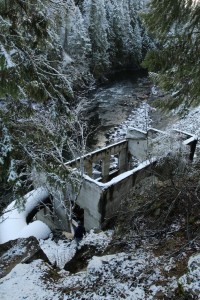
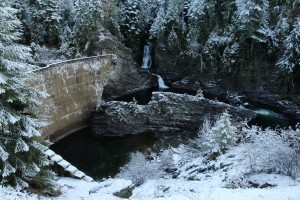
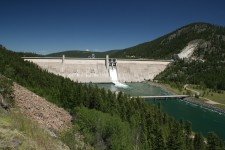
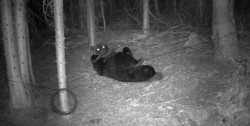


Laura. Tim Jones (in the comments) and I share John Hugh Jones as our grandfather. Tim has more info of our grandfather’s death a century ago, so I’ll contact him. Do you have any ideas about how we’d discover more info? Jeff Smith, Sisters, OR.
Hi Jeff, Here is a link from the Idaho Geological Survey with old newspaper articles about Eileen Dam: https://www.idahogeology.org/Uploads/Data/MineDocs/SA0058_116.pdf . Also, you could contact the Boundary County Museum. The museum curator and volunteers are very knowledgeable about our local history. Thanks for sharing! Laura